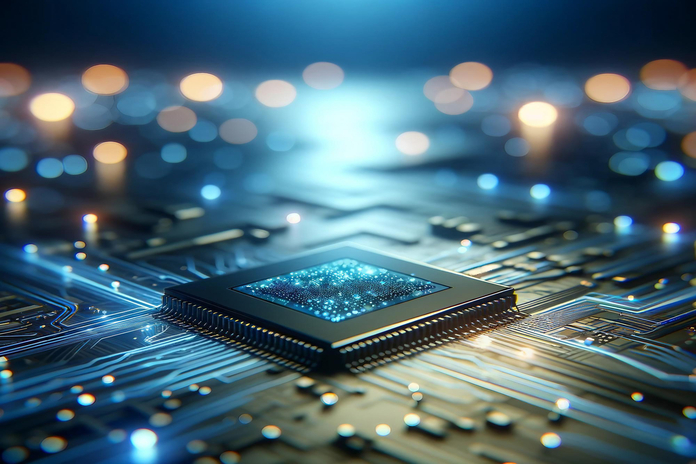Intel Corporation (NASDAQ:INTC) has left investors reeling with the announcement of what is being called the most significant restructuring in over four decades. The company’s shares plummeted by more than 21% in pre-market trading on Friday, following a brutal quarterly earnings report that missed analyst expectations across the board. This development has cast fresh doubt on Intel’s ability to regain its footing in an increasingly competitive semiconductor industry dominated by rivals like Nvidia (NASDAQ:NVDA) and AMD (NASDAQ:AMD).
Disappointing Earnings and Market Reaction
Intel’s latest earnings report was nothing short of a shock to the market. The company reported net sales of $12.8 billion, a 1% decline year-over-year, which fell short of the $12.95 billion analysts had expected. The miss was compounded by disappointing figures across key segments, including Client Computing, Data Center & AI, and Network & Edge, all of which underperformed against estimates.
Perhaps most alarming was Intel’s decision to suspend its dividend, a drastic move considering the company had paid a dividend for 125 consecutive quarters, amounting to $3.1 billion in 2023 alone. This decision is part of a broader Intel restructuring plan aimed at preserving liquidity as the company navigates through a period of higher-than-expected costs associated with ramping up AI chip production.
Massive Restructuring and Workforce Reductions
Intel CEO Pat Gelsinger has described the current restructuring as the most significant since the company’s shift from memory to microprocessors four decades ago. As part of the Intel restructuring plan, the company announced a 15% reduction in its workforce, which currently stands at approximately 125,000 employees. This headcount reduction is aimed at preserving cash flow and maintaining operational efficiency during a challenging period for the company.
In addition to workforce reductions, Intel has slashed its capital expenditure spending for 2024 by 20% compared to previous estimates, with further reductions expected in 2025. The CapEx cuts reflect the company’s need to realign its resources as it grapples with both market pressures and internal challenges.
Challenges in the Semiconductor Industry
Intel’s struggles are not just internal; they are reflective of broader challenges in the semiconductor industry. The company has been striving to regain a leadership position in an industry where it has fallen behind more agile competitors like Nvidia and AMD. Intel’s recent performance has raised concerns about its ability to compete, particularly as it tries to ramp up production of AI chips, a critical area of growth for the company.
Despite winning $8.5 billion in grants and another $11 billion in loans from the Biden administration to build semiconductor plants in four U.S. states, Intel’s turnaround plan has been met with skepticism. The company’s efforts to become a leading maker of chips for other companies, rivaling Taiwan Semiconductors, are now under scrutiny as Wall Street analysts question the feasibility of its ambitious goals.
Wall Street’s Growing Skepticism
The Intel restructuring plan and the company’s disappointing quarterly performance have not gone unnoticed by Wall Street. JP Morgan analyst Harlan Sur voiced concerns over Intel’s third consecutive quarter of negative revenue reset and disappointing guidance. Sur reiterated his under-weight rating on Intel, reflecting a broader sentiment of caution among investors.
Intel’s weak third-quarter guidance has only added to the uncertainty surrounding the company’s future. The company projected net sales between $12.5 billion and $13.5 billion, significantly below the $14.38 billion that analysts had anticipated. Additionally, Intel’s adjusted earnings per share forecast of a loss of $0.03 contrasts sharply with the market’s expectation of $0.30 in earnings.
Outlook and Future Prospects
As Intel embarks on this massive restructuring, the company faces a critical juncture in its history. The Intel restructuring plan is a clear indication that the company is aware of the challenges ahead, but whether it can successfully navigate these challenges remains to be seen. The market reaction to Intel’s latest earnings report and restructuring efforts suggests that investor confidence is waning.
Intel’s ability to execute its restructuring plan and regain its competitive edge will be crucial in determining its long-term viability in the semiconductor industry. As the company continues to invest in AI chip production and other growth areas, it will need to demonstrate to investors that it can deliver on its promises and return to a path of sustainable growth.
The coming quarters will be pivotal for Intel, as the company seeks to reassure investors and stakeholders that it has the right strategy in place to overcome the obstacles it faces. Whether the Intel restructuring plan will be enough to turn the tide remains a key question for the future.
Featured Image: Freepik



